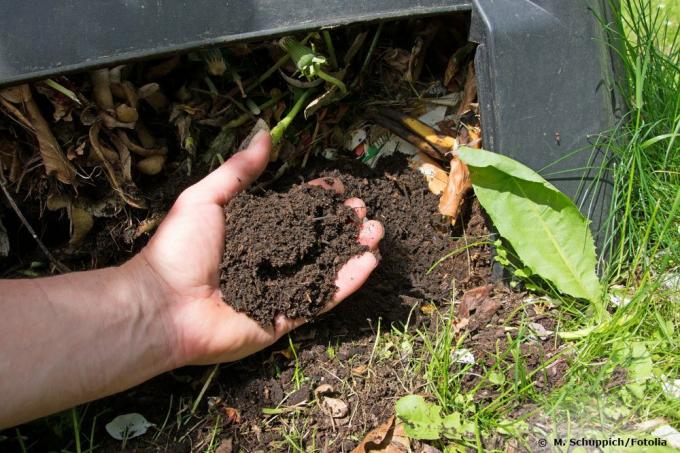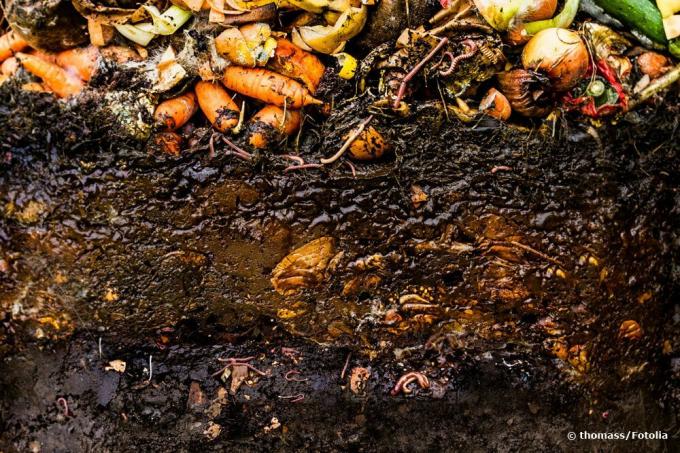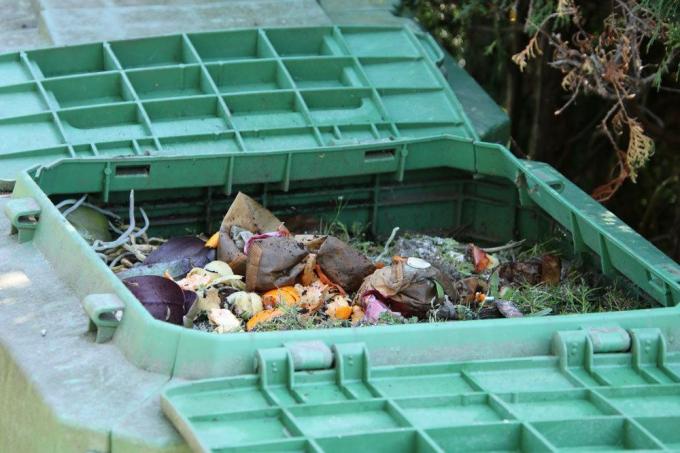
table of contents
- Sterilize compost
- Compost soil from the trade
- Own compost heap
- Sprout test with cress
- Sterilize compost: instructions
- oven
- microwave
- White spots after heat treatment
- Heat very large quantities
Every gardener knows: the compost is full of microorganisms. They turn green waste into fine, nutrient-rich soil. But germs can also lurk in it that are not welcome in the garden. Viruses and fungal spores, for example. If our plants come into contact with it, they can become ill. The growth quickly leaves a lot to be desired and some specimens even die. So that you really only experience the benefits of this natural fertilizer, you should sterilize compost beforehand.
Sterilize compost
Microorganisms also need good living conditions in order to survive and multiply. This includes, among other things, a certain comfortable temperature. If the actual prevailing temperature deviates significantly from the ideal, it becomes critical for them.
- even thermophilic germs do not like heat
- from around 75 ° C it gets too hot for them
- their number is rapidly decreasing
- at 100 ° C they have little chance of survival
- the duration of the heat exposure is crucial
Raising the temperature to the unbearable level for a while is therefore a common method of killing harmful organisms effectively and without chemicals.
Compost soil from the trade
You do not have to sterilize the compost you buy in stores, as it is already offered (almost) without harmful germs. In professional composting plants there is a sufficiently high temperature over a long period of time to kill most of the harmful germs.
It is true, however, that this heat kills not only the harmful but also the beneficial microorganisms. However, these useful tiny things would be good for the soil life in the garden bed. Sterilized soil can therefore be called dead material in this sense. It has its advantages as a seed compost and potting compost for young plants that are not yet resistant.
Own compost heap
Germs will always lurk on the specially prepared compost heap. Even with careful disposal of all diseased plant parts in the residual waste container, this can never be completely avoided. In addition, the domestic rotting process rarely reaches temperatures above 60 ° C. But that is not enough to make the decomposing material sterile. If you need germ-free substrate for your plants, you should at least prepare this required amount accordingly. You do not have to buy any special equipment for this, a normal household oven is sufficient. The instructions in this text guide you step by step through the work process.
tip: You should also sterilize compost that you have bought and that you have stored in an opened package for a long time.
Sprout test with cress
Before doing this tedious work, you can easily test whether it is necessary at all. Germs are difficult to spot with the naked eye. Perhaps your garden compost or the soil you bought is not as heavily contaminated as you suspected. Especially if you want to treat larger amounts of compost, the so-called. Cress test.
- fill a pot with compost
- moisten slightly
- sow cress on it
- place light and warm
If the cress germinates within three days and the seeds form white, healthy-looking roots, the germ load is low or acceptable. Otherwise, you should sterilize the soil.
Sterilize compost: instructions
If you want to sterilize the soil from your compost, you can easily do it at home in just a few steps.
oven
With its heat, the oven is ideal for removing harmful organisms from compost. However, its capacity is limited. If you only need small amounts of compost to sow seeds in a few pots or to repot a flower, its capacity will be just fine. Of course, you can also sterilize a larger amount in several passes. The following instructions include 6 steps, at the end of which is germ-free soil.
- Preheat the oven to 200 ° C top and bottom heat.
- Spread the compost out flat in a container that must be fireproof.
- Moisten the earth a little.
- Place the container in the preheated oven. In it he should at least Remain at the same temperature for 30 minutes.
- Stir the amount of soil a few times in between.
- After heating, let the contents cool completely before using them on your plants.
microwave
Because a microwave works at a rapid pace, it is often used as an oven replacement. This also applies to the sterilization process. The instructions for this are extremely short: The moistened soil is placed in a microwave-safe container for approx. Heated at the highest level for 10 minutes. Here, too, the contents should be stirred a few times in between.
White spots after heat treatment
After pitch black compost has been heated in the oven or microwave, it is often streaked with white dots. The cause is in proteinaceous Insect larvae and look for worms. In the heat, the protein changes, becomes white and only then becomes visible.
- the white spots are harmless
- the insects and worms are killed by the heat
- Earth can be used without restriction
Heat very large quantities
In a garden where everything plant-based is consistently composted, a lot of compost accumulates over time. The desire to sterilize the entire amount before using it as a fertilizer or soil admixture is understandable, but not always sensible. The living compost fertilizer improves the life of the soil sustainably. Healthy plants that are optimally cared for can usually survive any harmful germs that may be present.
If a large amount of compost has to be freed from harmful germs, the oven is far too small for it, and the microwave especially. If you want to reduce the harmful germs in the compost on a regular basis, the purchase of a so-called. Earth damper worth it.
- suitable for private use
- about the size of a wheelbarrow
- can also be used for larger amounts of compost
All electrically operated models are offered with different capacities.
tip: Some large nurseries have their own soil damping devices. Ask if they would sterilize your compost in it. Even if a price is charged for this, it is an alternative to your own device if you only need it occasionally.


